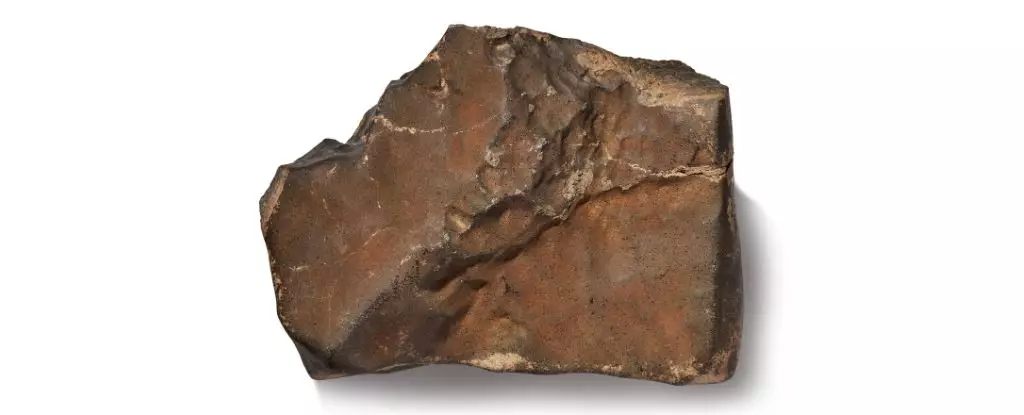Meteorites have long captivated human curiosity, serving as tangible remnants of our universe’s history. Among these celestial artifacts, Martian meteorites are especially prized due to their extraterrestrial origin and scientific value. The recent auction of a giant Martian meteorite for a staggering $5.3 million exemplifies society’s obsession with owning pieces of another world. Yet, this colossal price tag also ignites critical questions about the ethics of ownership and the implications of commodifying nature’s cosmic library. The meteorite’s record-breaking size and rarity, combined with its journey across millions of miles, make it a scientific marvel. However, this spectacle of wealth also prompts us to reconsider our relationship with such heritage items—are they trophies for the highest bidder, or sacred relics that should serve humanity’s collective knowledge?
Ownership and Provenance: Navigating the Ethical Minefield
The core of the controversy lies in questions surrounding the meteorite’s origin and legal ownership. Discovered in the Sahara Desert in Niger, the massive 54-pound rock’s journey offers little clarity; it was quickly sold into an international trading circuit, emerging in Italy before making its way to Sotheby’s. Niger’s government contends that such meteorites are part of its cultural patrimony and should consequently remain under national authority. Their suspicion of illicit trafficking echoes broader issues in the global collectibles market, where artifacts frequently cross borders through shadowy channels. Conversely, Sotheby’s insists that all procedures were followed during exportation, asserting its compliance with international laws. Yet, transparency remains elusive, fueling accusations of illegal activity. This clash of perspectives reveals a deeper truth: defining ownership of cosmic materials is more complex than it appears, especially when legal frameworks differ across nations and when the scientific importance of these rocks conflicts with commercial interests.
Legal Perspectives: Laws that Shape the Cosmic Debate
Legal statutes governing meteorite ownership vary significantly worldwide, often reflecting differing cultural values about natural heritage. In the United States, private landowners can claim meteorites found on their property, turning space rocks into personal possessions. Conversely, countries like Niger treat meteorites as cultural patrimony—assets passed down through generations that symbolize national identity. French experts like Matthieu Gounelle emphasize that meteorites engraved within Nigerien law are considered part of the country’s tangible heritage, deserving protection and careful oversight. This legal dichotomy complicates international trade, as meteorites can easily slip through jurisdictional gaps, fueling black markets and illegal exports. The case of the Niger meteorite exemplifies this challenge, revealing the necessity for a globally harmonized legal approach—one that balances scientific access with cultural preservation. Without such coordination, valuable extraterrestrial resources risk becoming commodities exploited by greed, rather than tools for advancing human knowledge.
The Scientific Goldmine: Why Martian Meteorites Demand Respect
Beyond legal and ethical questions, the scientific potential of Martian meteorites is profound. As the largest such specimen ever discovered, the meteorite known as NWA 16788 possesses priceless insights into Mars’ geological history and planetary processes. It can potentially answer critical questions about Martian evolution, climate conditions, and even the prospects for past life—questions that are central to humanity’s quest to understand our place in the cosmos. Dismissing such a discovery as mere property undermines our collective pursuit of knowledge. From an ethical standpoint, the meteorite symbolizes more than wealth; it embodies the universe’s story, awaiting decipherment by scientists who approach it with reverence rather than greed. Salvaging scientific value necessitates stringent regulations to safeguard such finds from illicit trade, ensuring that these treasures serve as tools of discovery rather than mere commodities for profit.
A Cultural Responsibility: Respecting the Universe’s Shared Heritage
Ultimately, the debate surrounding the Martian meteorite underscores a fundamental truth: space rocks are part of a shared cosmic heritage that transcends borders and commercial interests. They are relics of an interconnected universe, offering humanity the chance to delve into the origins of planets, stars, and perhaps even life itself. The ethical responsibility rests on us—not just scientists or diplomats but society at large—to protect these celestial remnants from exploitation. Recognizing their intrinsic scientific and cultural value should guide policies that prioritize preservation over profit. The controversy also calls for heightened international cooperation, creating frameworks that respect both national interests and the collective quest for knowledge—a delicate balance that ensures such treasures remain accessible for future generations and scientific exploration.
In conclusion, the sale of a Martian meteorite at Sotheby’s might seem like an awe-inspiring event, yet it exposes profound dilemmas about ownership, legality, and ethical stewardship. These rocks are more than commodities; they are scientific gateways and symbols of our shared universe. Respecting their origin and value is not just a matter of legal compliance but a moral imperative. The universe’s history, encoded in each rock, beckons us to approach these treasures with humility and responsibility—lest we allow greed to overshadow our collective responsibility to explore and preserve the cosmos with integrity.

